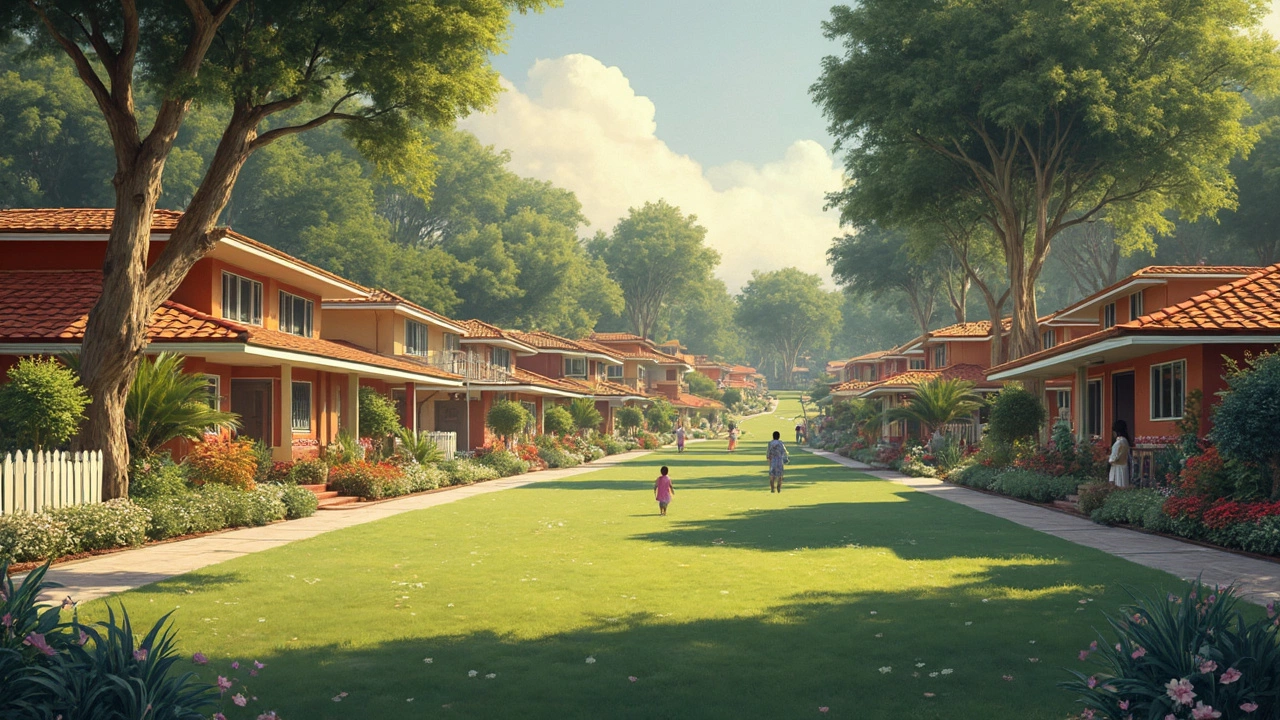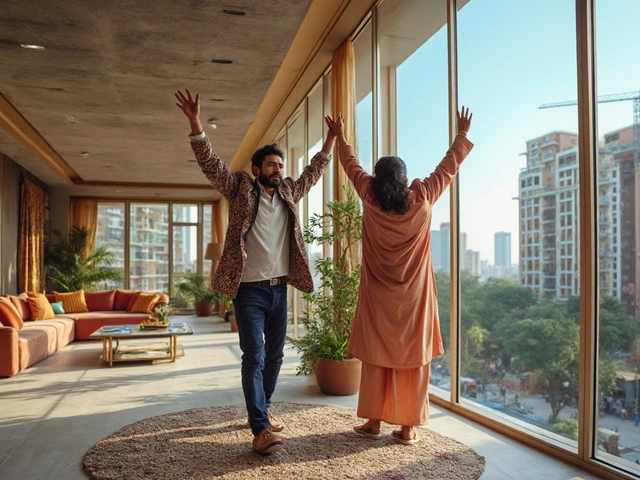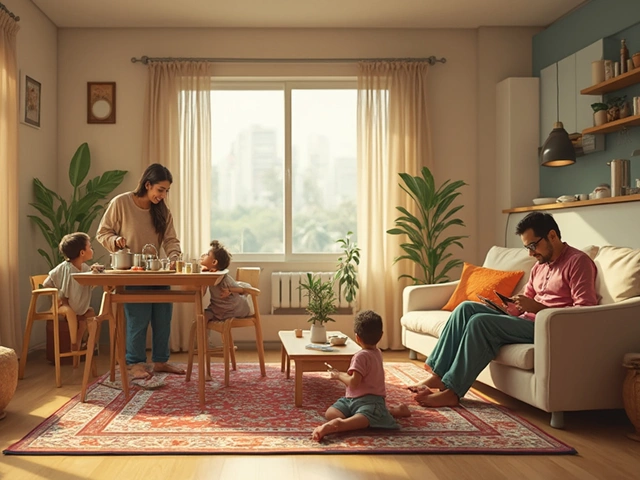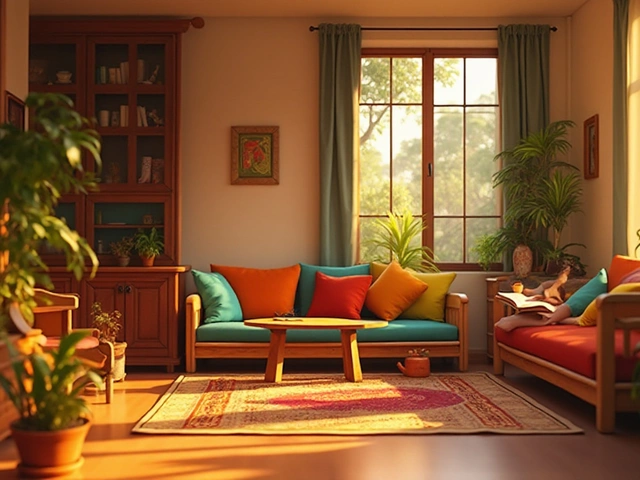Thinking about investing in a rambler style house? You're not alone. These homes, often called ranch-style homes, boast a single-story design that's both practical and stylish. People love them for their open floor plans that make entertaining a breeze and living a little simpler.
The beauty of rambler houses began to capture hearts in the 1950s when space was used wisely and living was made easy. They spread across the United States like wildfire, offering families a fresh, new way to enjoy everyday life.
Why are they still a top choice? For starters, their design focuses on accessibility. Minimal steps make them perfect for those wanting to avoid stairs daily. Plus, they typically have large windows, enhancing the bright and airy feel that's hard to resist.
If you're on the lookout for a place that mixes old-school charm with up-to-date features, modern ramblers might just hit the mark. These homes can easily incorporate contemporary updates while keeping that classic, cozy vibe.
And for homebuyers, it's good to know what specifics to look out for when you're on the hunt. Whether it's the size of the lot, room layout, or proximity to amenities, there's a lot to consider when choosing a rambler style home.
- Overview of Rambler Style Houses
- Historical Popularity
- Design Features
- Benefits of One-Story Living
- Modern Adaptations
- Buying Tips
Overview of Rambler Style Houses
So, what's the deal with rambler style houses? These homes, also known as ranch-style homes, took off in America around the 1950s. They offer a single-story setup that makes life more convenient. People fell in love with these houses because they delivered exactly what they promised: open spaces and easy living.
Typically, rambler homes spread horizontally, making them ideal for larger lots. They emphasize simplicity and connection with the outdoors, often featuring large windows and sliding glass doors. This design concept is all about letting natural light pour in, giving the house an inviting and warm ambiance.
Key Features
A key signature of the rambler style is its low-pitched roof and extended eaves, which are not just architectural choices but also functional ones. They aim to shield windows from direct sunlight while maintaining efficient airflow, keeping the home cool in warmer months. Inside, you'd usually find a long, low layout with an open floor plan where the living room, kitchen, and dining areas seamlessly flow into one another. The goal is to make movement within the home fluid and flexible.
Why Choose a Rambler?
If mobility is an issue or you just don't like stairs, these homes are fantastic. The one-level design ensures you won't be trekking up and down flights all day. Plus, the architecture is inherently family-friendly and perfect for entertaining guests, as everything is pretty much on the same level.
Another perk? The single-story home layout makes it easier to expand your living area by building outward, not upward, if you ever want to make changes or add rooms.
Modern-Day Adaptations
In today's world, these homes can host modern amenities without losing any of their vintage charm. Open kitchens, smart home tech, and energy-efficient fixtures can easily be added while keeping that classic, laid-back style intact.
| Feature | Benefit |
|---|---|
| Single-Story Layout | Easy accessibility |
| Open Floor Plan | Flexible living space |
| Large Windows | Lots of natural light |
| Low-Pitched Roof | Energy efficiency |
Whether you're seeking spaciousness or a home that cuts the hassle of maintenance, rambler style houses have something to offer for everyone. So if you're browsing listings, don't overlook these charming, practical options.
Historical Popularity
The rambler style house, originally birthed out of a mix between the casual design of the American West and the need for practicality, emerged strongly in the post-World War II era. The 1950s saw a housing boom, and these homes perfectly fit the bill for efficient, suburban growth. Their one-story layout married with open floor plans was a match made in heaven for families looking for ease and comfort.
Rambler houses became architectural icons in places like California, known for spreading out horizontally to make the most of large lots, a stark contrast to the more vertical homes seen in city living. Homebuyers back then cherished the way these homes blended indoor and outdoor living spaces, promoting that laid-back lifestyle people were craving after the war.
Features Driving Their Growth
One major feature was the L- or U-shaped design that often included a patio, enhancing the usable space. The designs often featured large windows, not only maximizing natural light but allowing families to keep an eye on their well-curated lawns or gardens.
- Open floor plans: Helped family interaction and flexibility of interior design.
- Built into nature: This design resonated with people who loved the ease of connecting indoors with outdoors.
- Easy expansion: Single-story meant if more space was needed, sideways expansion was pretty straightforward.
These homes have maintained a place in the real estate market because many of them were built during a time when craftsmanship was highly valued, meaning that some of the bones of these houses are incredibly sturdy. Today, they often get picked for remodeling for the same reasons they once boomed: they’re a canvas that can adapt to modern lifestyles while retaining their original quaint charm.
Design Features
When you're picturing a rambler house, envision a layout that's super practical. These homes are known for their single-story design, perfect for easy movement throughout the space without any stairs to worry about.
Open Floor Plan
The centerpiece of a rambler style house is usually its open floor plan. The living room, dining area, and kitchen often flow into one another, creating a welcoming and spacious environment. Great for hosting family and friends, it lets everyone mingle and connect with ease.
Low-Pitched Roof and Wide Eaves
You can't miss the low-pitched roofs on these homes. They're a staple of the style and give the house that classic, laid-back ranch vibe. Plus, wide eaves help keep things cool and shaded in the summer.
Connection to the Outdoors
One thing that really stands out is the connection to nature. Rambler homes often have sliding glass doors that open up to patios or decks, merging indoor and outdoor living spaces seamlessly. It’s like having your own mini-retreat.
Large Windows
Tons of natural light? Yes, please. Rambler homes come with big, bold windows that let the sunlight pour in. Perfect for those who love bright, airy spaces that feel warm and inviting all year round.
Varied Exteriors
Traditionally, exteriors feature brick, wood, or stucco. Today’s touches can bring newer materials into play, but the charm of a ranch’s straightforward aesthetics remains.
Thinking about redecorating or renovating? A rambler house offers tons of flexibility. While keeping its classic roots, it’s a breeze to update these homes with sleek, modern finishes for a more contemporary feel.
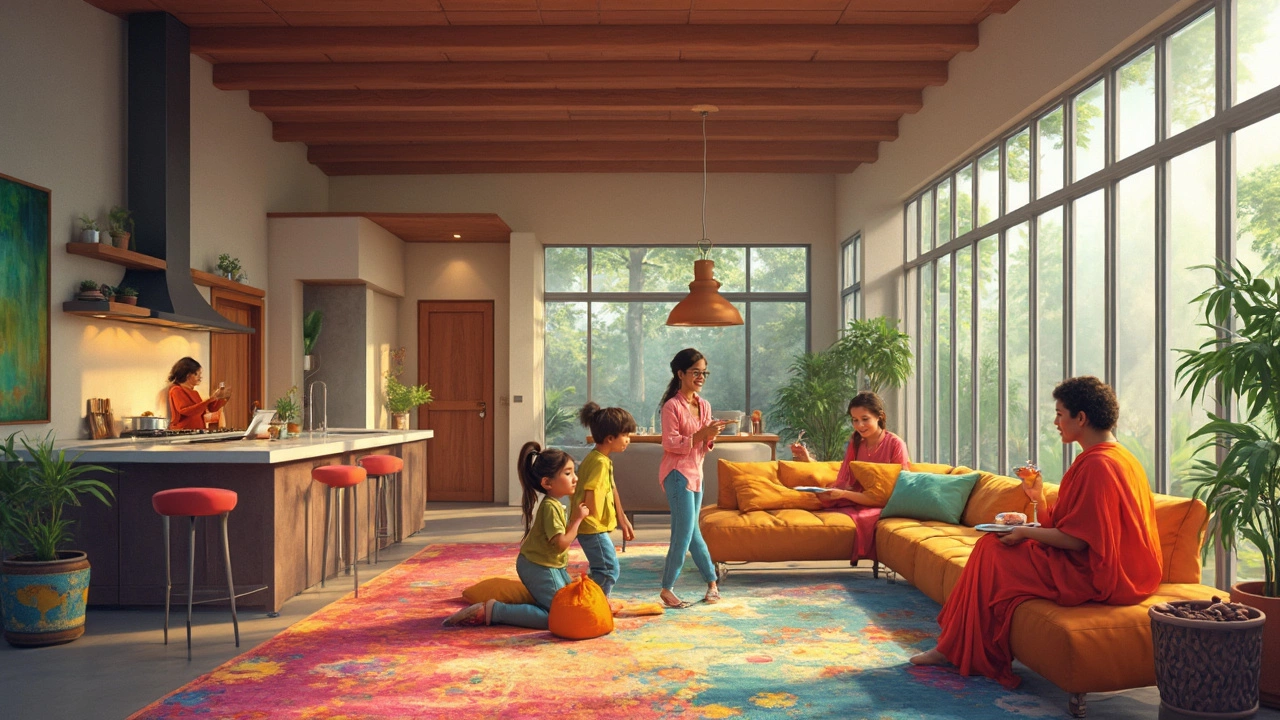
Benefits of One-Story Living
Living in a rambler style house isn't just a nod to nostalgia; it's about convenience and ease. One-story living has huge perks, especially if you're not a fan of climbing stairs or are looking for a home that’s easier to navigate as you age.
Accessibility
First off, let's talk accessibility. A single-level home means fewer barriers. Whether you're bringing in groceries, wrangling kids, or avoiding mobility issues, fewer steps make your day-to-day routine smoother. If you're looking to future-proof your home choices, this is a big win.
Easy Maintenance
One story also translates to easier maintenance, both inside and out. Cleaning becomes less of a chore without having to lug vacuum cleaners or mops up and down stairs. Outside, you’ll find tasks like window washing and painting much simpler when you're not dealing with multiple levels.
Energy Efficiency
Believe it or not, rambler houses can be more energy-efficient, too. Heating and cooling a single floor can require less energy compared to multi-level homes, which often have issues with temperature distribution. The result? You could see some savings on your utility bills.
Open Floor Plans
Many of these homes come with open floor plans that foster a natural flow between rooms. This layout not only provides a sense of spaciousness but also makes it easier to keep an eye on everything happening around the house.
For those who enjoy hosting, the seamless transition from kitchen to living space to outdoor area is perfect for having friends and family over without feeling cramped.
Family-Friendly and Safe
For families, one-story living means kids and parents are all on the same level, which can make keeping tabs on little ones much easier. Plus, there are fewer stairs to worry about, reducing the risk of accidents.
Desirability
Lastly, rambler style homes often appeal to a broad market, which is great if you ever consider selling. Their timeless design and practical layout rarely go out of style.
In summary, the rambler style house brings a mix of simplicity, comfort, and convenience—a triple threat for anyone seeking a practical living space.
Modern Adaptations
As times have changed, so have rambler style houses. Modern tweaks to these classic homes have kept them relevant and appealing to new generations of buyers. So, what's evolved?
Open-Concept Living
One of the most significant updates is the embrace of open-concept spaces. While the original rambler style homes were already pretty open, knocking down a few walls here and there has made kitchens, living rooms, and dining areas seamlessly flow together. This openness is perfect for socializing and makes even smaller homes feel much larger.
Energy Efficiency
Energy efficiency has also taken center stage. Homeowners are upgrading to double-paned windows, LED lighting, and installing top-notch insulation. These changes are kind on the wallet and the environment. You might even find solar panels making an appearance on rooftops, keeping utility bills low.
Smart Home Features
Speaking of taking things up a notch, smart home technology is becoming standard. Think smart thermostats, automated lighting systems, and security features you can control from your phone. These additions are not only cool but offer a layers of convenience that fits the modern lifestyle.
Stylish Updates
In terms of design, we've seen kitchens and bathrooms get major facelifts. The charm of a single-story home doesn't mean you can't enjoy sleek cabinets, granite countertops, or subway tile backslashes. Bathrooms are getting the spa treatment too, creating luxurious retreats within the comfort of home.
Outdoor Enhancements
Last but not least, the outdoors is where modern rambler homes shine bright. Open-air decks and cozy patios extend living spaces outside, making barbecues and summer evenings something to look forward to. Many homeowners opt for gardens or even small vegetable patches, bringing a bit of nature right up close.
These modern adaptations add flair while respecting the timeless roots of rambler houses. Whether you’re updating your existing home or eyeing a new purchase, these touches ensure that your home is as comfortable and efficient as it is stylish.
Buying Tips
So, you've set your sights on a rambler style house. Good choice! Before you seal the deal, here are some critical tips to keep in mind to ensure you get the most out of your investment.
Do Your Homework
The first step is understanding the market in your desired area. Check the average prices of rambler homes to see if they fit your budget. Pay attention to the location—being close to schools, shopping centers, and parks can boost your property's value and make life more convenient.
Examine the Layout
With a rambler house, you're getting a single-story design. Make sure the home's layout meets your needs. Look at room sizes, and think about how it suits your lifestyle, whether it's an open plan for social gatherings or more private spaces.
Watch for Updates
Many older rambler homes may need updates. Check for modern features like energy-efficient windows, updated kitchens, or smart home tech. These will add not only comfort but also resale value.
Assess the Condition
Be sure to evaluate the home's condition. Look for signs of wear and tear, such as roof condition, insulation, and foundation stability. If possible, hire a home inspector who can spot hidden issues before they become big problems.
Consider Future Needs
If you plan to stay for the long haul, think about how those needs might evolve. A rambler's step-free design is great for aging in place, which is a big plus if you plan to retire there.
Price Negotiation
Finally, don't be afraid to negotiate. Use your research to argue for a fair price. Selling prices can often be talked down, especially if you've identified areas needing attention.
| Feature | Check |
|---|---|
| Energy Efficiency | Updated windows and insulation? |
| Layout | Open spaces aligning with lifestyle? |
| Renovations | Consideration for future upgrades? |
With these tips in hand, you're better equipped to make a smart purchase. Remember, a rambler style house isn't just a home—it's a lifestyle choice that combines classic design with contemporary living.
